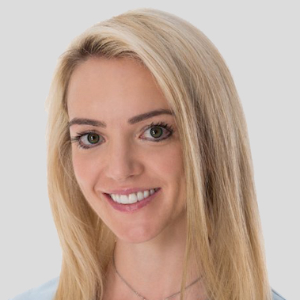Title : Outpatient, multimodal neuromuscular treatment reduces pelvic pain and improves functionality for women with endometriosis
Abstract:
Characterized by abnormal growth of uterine tissue outside the uterine cavity, Endometriosis affects up to 10% of women and girls of reproductive age. Although awareness and access to treatment have improved in recent years, Endometriosis can take months or years to diagnose, and even longer to adequately treat. Patients with endometriosis often present with dysmenorrhea, pelvic pain, abdominal pain, and dyspareunia. These symptoms, and others, significantly inhibit patients’ quality of life by disrupting sleep, work, exercise, intercourse, bladder and bowel function, and mood. Treatment options are limited and often require surgery.
The purpose of this study was to test the effectiveness of a multimodal neuromuscular treatment protocol in treating the symptoms of Endometriosis, improving pain and function. 73 patients ages 20-79 who had previously been diagnosed with Endometriosis presented to an outpatient clinic for treatment of Endometriosis-related symptoms. These symptoms had persisted for an average of 8 years. All patients underwent a once weekly, six-week treatment consisting of ultrasound-guided pelvic floor musculature trigger-point injections and peripheral nerve hydrodissection.
To measure the effects of this treatment, a 0-10 Visual Analogue Scale (VAS) was used to measure pelvic pain intensity, and the Functional Pelvic Pain Scale (FPPS) was used to measure function across multiple areas. These measures were taken at patients’ first visit to a clinic, and three months after treatment began.
Pelvic pain intensity reduced by 42% after three months. Before treatment, the mean VAS score was 7.81 (SD 1.73) (a=0.05; CI 7.41-8.21) and the posttreatment mean VAS score was 4.51 (SD 2.23) (a=0.05; CI 3.99-5.02). Pelvic pain functionality improved by 23% after three months. Pretreatment FPPS scores averaged at 13.19 (SD 5.95) (a=0.05; CI 11.82-14.56), which decreased to 10.1 (SD 5.64) (a=0.05; CI 8.8-11.39) after treatment. Among FPPS categories, participants saw the greatest changes in bladder pain and function (35% improvement) and intercourse pain and function (28% improvement). These results indicate that this unique treatment was very effective at relieving pain and increasing function for patients with Endometriosis.
Audience Take Away:
- Information about a once weekly, six-week treatment protocol involving ultrasound-guided pelvic floor musculature trigger-point injections and peripheral nerve hydrodissection
- Key outcomes of a retrospective study of 73 patients with Endometriosis who underwent the treatment
- Why each aspect of this unique treatment results in improvements in pain and function for patients with Endometriosis




